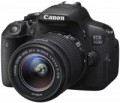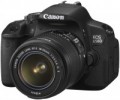DxOMark rating
The result shown by the camera in the DxOMark ranking.
DxOMark is one of the most popular and respected resources for expert camera testing. According to the test results, the camera receives a certain number of points; The more points, the higher the final score.
Focal length
Focal length of the camera lens.
Focal length is such a distance between the camera matrix and the optical center of the lens, focused at infinity, at which a clear and sharp image is obtained on the matrix. For models with interchangeable lenses (
mirrorless cameras and MILC, see “Camera Type”), this parameter is indicated if the camera is supplied with a lens (“kit”); Let us recall that, if desired, optics with other characteristics can be installed on such a camera.
The longer the focal length, the smaller the viewing angle of the lens, the higher the degree of approximation and the larger the objects visible in the frame. Therefore, this parameter is one of the key for any lens and largely determines its application (specific examples are given below).
Most often in modern digital cameras, lenses with a variable focal length are used: such lenses are able to zoom in and out of the image (for more details, see "Optical Zoom"). For "DSLRs" and MILC, specialized optics with a constant focal length (fixed lenses) are produced. But in digital compacts, "fixes" are used extremely rarely, usually such a lens is a sign of a high-end model with specific characteristics.
It should be borne in mind that the actual focal length of the lens is usually given in the characteristics of the camera. And the viewing angles and the general purpose of the optics are determined not only by this parameter, but also
...by the size of the matrix with which the optics are used. The dependence looks like this: at the same viewing angles, a lens for a larger matrix will have a longer focal length than a lens for a small sensor. Accordingly, only cameras with the same sensor size can be directly compared with each other in terms of lens focal length. However, to facilitate comparisons in the characteristics, the so-called. EGF - focal length in 35 mm equivalent: this is the focal length that a lens for a full frame matrix having the same viewing angles would have. You can compare by EGF lenses for any matrix size. There are formulas that allow you to independently calculate the equivalent of 35 mm, they can be found in special sources.
If we talk about a specific specialization, then the EGF up to 18 mm corresponds to ultra-wide-angle fisheye lenses. Wide-angle is considered "fixed" optics with EGF up to 28 mm, as well as vario lenses with a minimum EGF up to 35 mm. Values up to 60mm correspond to "general purpose" optics, 50 - 135mm are considered optimal for shooting portraits, and higher focal lengths are found in telephoto lenses. More detailed information about the specifics of various focal lengths can be found in special sources.Frames per series (JPEG)
The highest number of shots a camera can capture “in one go” in JPEG continuous shooting.
The technical features of modern digital cameras are such that during continuous shooting, photos have to be recorded in a special buffer, and only then, after the end of the series, they can be copied to a memory card. This buffer has a limited size, so the number of frames in one series is also limited. At the same time, we note that this indicator is usually indicated for shooting at the highest possible resolution (see "Maximum image size"); at lower resolutions, the volume of each image is reduced, and the number of frames in the series may turn out to be more than stated in the specifications.
JPEG, the most popular digital photography format today, is smaller and requires less processing power than RAW (see "Recording in RAW Format"). Therefore, in a JPEG series, as a rule, more frames are available to the photographer. However, in some models that have two separate buffers (for RAW and JPEG), it may be the other way around.
Frames per series (JPEG RAW)
The highest number of frames a camera can capture “in one go” in continuous shooting mode, where the same frame is saved in both JPEG and RAW format at the same time (see “Recording in RAW Format”).
The technical features of modern digital cameras are such that during continuous shooting, photos have to be recorded in a special buffer, and only then, after the end of the series, they can be copied to a memory card. This buffer has a limited size, so the number of frames in one series is also limited. At the same time, we note that this indicator is usually indicated for shooting at the highest possible resolution (see "Maximum image size"); at lower resolutions, the volume of each image is reduced, and the number of frames in the series may turn out to be more than stated in the specifications.
Shooting JPEG and RAW at the same time requires a lot of resources, and the materials themselves take up a lot of space. Therefore, the possibility of such shooting itself is available mainly in premium cameras, and the number of frames in a JPEG RAW series is usually less (at best, the same) than in any of these formats separately.
File recording formats
File formats in which the camera can record video. Given that the footage is designed to be viewed on an external screen, you should make sure that the playback device (DVD player, media centre, etc.) is able to work with the appropriate formats. At the same time, many camera models themselves can play the role of a player by connecting to a TV via an audio / video output or HDMI (see the corresponding paragraphs of the glossary). And if the video materials are to be viewed on a computer, you should not pay special attention to this parameter at all: problems with format incompatibility in such cases rarely occur, but are usually solved by installing the appropriate codec.
Autofocus modes
Autofocus operating modes provided in the camera design.
— One picture. The main mode of autofocus operation is found in all modern cameras and is used most often. Designed for shooting motionless objects.
— Follower. This mode is used for shooting moving objects, the distance to which is constantly changing: the camera constantly monitors the position of the object, constantly adjusting the optics so that it is in focus. Usually found in middle and upper class cells.
— AI focus. A peculiar combination of the previous two modes is used when a stationary object can start moving at any moment. If the scene is static, autofocus works in the single frame mode, but if the object on which focus is made starts to move, the device switches to tracking autofocus mode. AI mode allows you to almost instantly set the optimal autofocus settings, which is especially useful for sequential shooting. Initially, it was found in expensive models, however, thanks to the development of technology, today it can even be used in inexpensive compacts (see “Camera type”).
— By the face. Autofocus mode that uses a face recognition system and focuses on them. This feature is especially useful for taking pictures of people at a great distance from the camera, when the face is much smaller than the frame size, such as in group shots.
— With a smile. A further development of the face autofocus mode described above, when, in accordance with the nam...e, the system reacts not just to a face, but to a smile. This mode can be combined with the function of automatic shooting at the moment of a smile.
— Animal in the frame. A mode designed primarily for shooting animals, which can be difficult (and often impossible) to make them sit still in the frame. It is usually a variation of the tracking autofocus described above, but specific features of operation may vary depending on the camera model.
This list is not exhaustive, and other specific autofocus modes may be provided in the design of modern cameras.
Battery model
The model name of the original battery (see "Power Type") used in the camera. Knowing this name, you can easily find a spare or replacement battery for the device.
Underwater box model
The name of the model of the underwater box for which the camera is designed. Such a device allows, as the name suggests, to use
the camera for underwater filming ; it is much easier to purchase it if you know the specific model of a compatible box.
Console/synchronizer model
The model name of the remote control or synchronizer for which the camera is designed. The purpose of the remote is clear from the name, and the synchronizer is a device that simultaneously fires the camera shutter and an external flash (or a system of such flashes). Knowing the names of models, it is much easier to choose such accessories for a specific camera.

